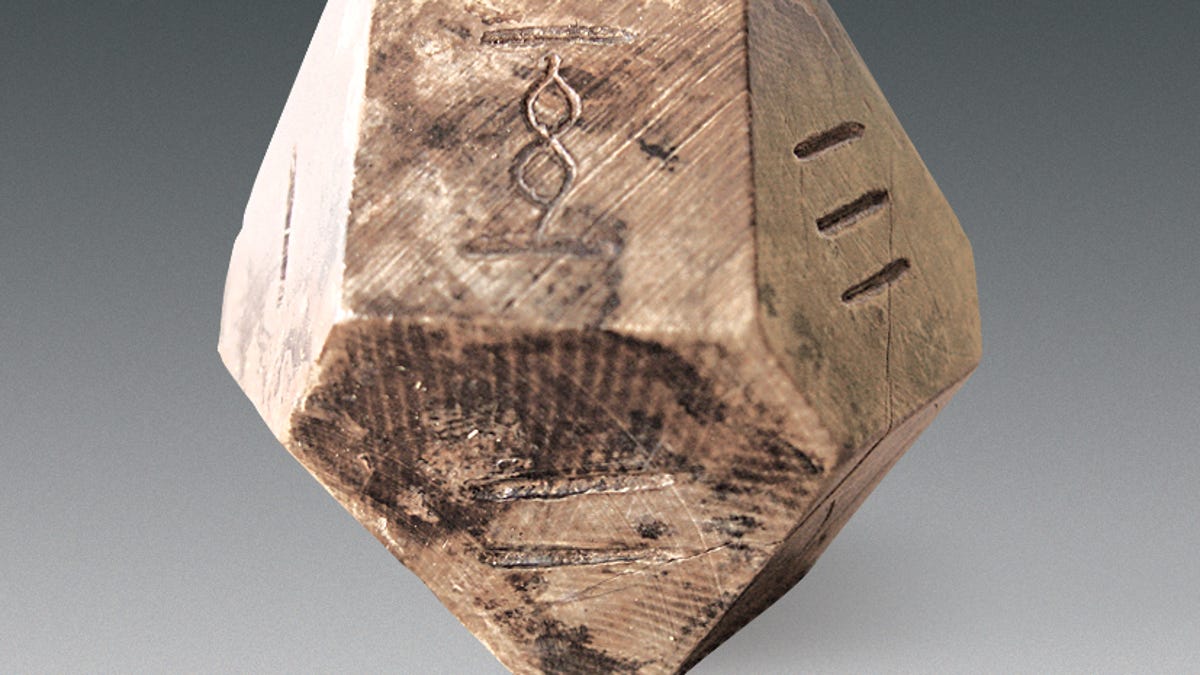 Why You Can Trust CNET
Why You Can Trust CNET Lost board game found in 2,300-year-old tomb
Pieces of a board game that hasn't been played for an estimated 1,500 years have been found in a tomb in China.
So much of human history has been lost to the ravages of time. If we're lucky, we can recover fragments that allow us to slowly piece together how our ancestors lived and played.
Archaeologists excavating an ancient, 2,300-year-old tomb near Qingzhou City in China have made just such a find. Although the tomb had been heavily looted, some pieces from an ancient board game had been left behind. These were a 14-sided die made from an animal tooth, 21 oblong pieces with numbers painted on, and a broken tile decorated with a pair of eyes and thundercloud patterns.
The findings were originally published in Chinese in the journal Wenwu in 2014. Recently, an English translation was published in the journal Chinese Cultural Relics.
A drawing of the broken tile, which made up part of the game board.
The pieces, the team believes, belong to a game called Liubo ("six sticks"), or simply Bo. It is thought that the game may have started to wane as the popularity of Go rose, before it was eventually forgotten. It hasn't been played in around 1,500 years, and its rules have been forgotten.
Liubo sets, however, have been found in many Han Dynasty-era high-status tombs. There are also sculptures and paintings of people playing the game. These have allowed researchers to guess at how it may have been played. It is played by two people, each of whom have six throwing sticks (hence the game's name) to determine their moves, which occur around a geometrically designed board.
Two of the numbered oblong pieces.
A third-century BC poem from the anthology Chu Ci, and translated by sinologist David Hawkes describes the game:
Then with bamboo dice and ivory pieces the game of Liu Bo is begun;
Sides are taken; they advance together; keenly they threaten each other.
Pieces are kinged and the scoring doubled. Shouts of 'five white!' arise.
A full set found in a second-century BC tomb consisted of a board, a storage box, six black cubes, six white cubes, 18 game pieces, 42 rod-shaped counting chips, 12 throwing rods, a knife and scraper, and one 18-sided die.
In the tomb near Qingzhou, the relatively small number of pieces recovered could probably be attributed to the looting.
"Despite the huge scale of the tomb, it has been thoroughly robbed," the archaeologists wrote, according to Live Science. "The coffin chamber was almost completely dug out and robbed, suffering severe damage in the process."
A skeleton was also found in the tomb. Looters had dug a total of 26 shafts into the tomb, and the skeleton was curled up near one of these. This position, the archaeological team said, indicates that the skeleton may have been one of the looters.
The age of Liubo is unknown, but records indicate that the game was already popular by the time of the Warring States period, which began in 476 BC.


